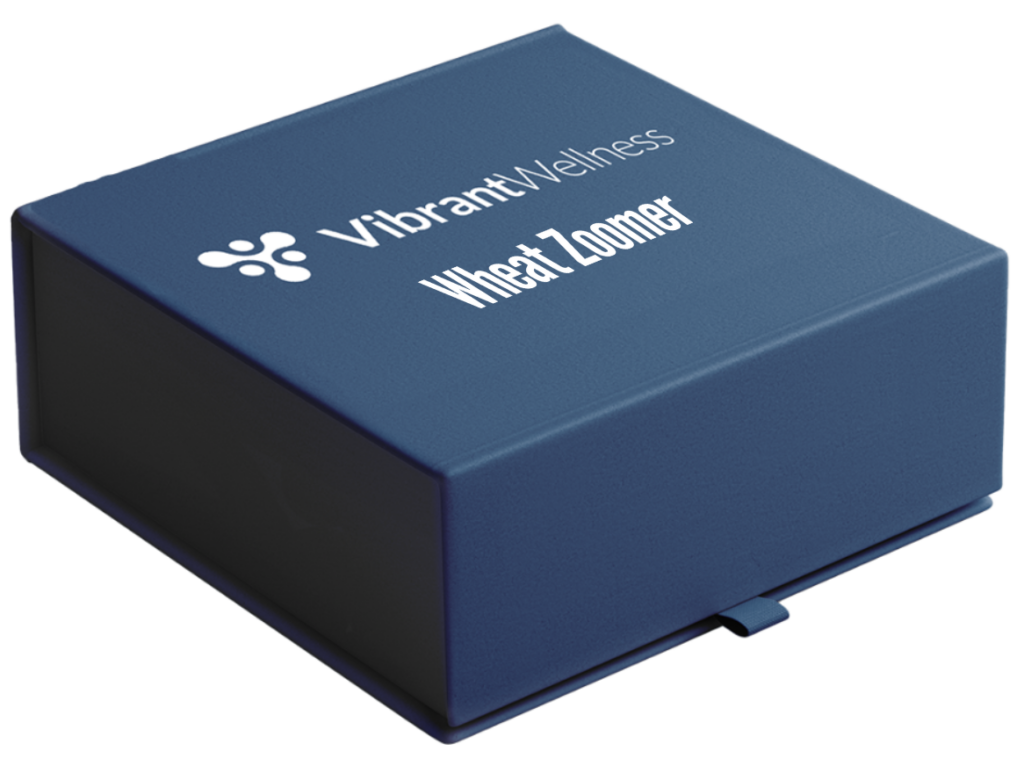When we think of bacteria, we often imagine harmful germs that make us sick. But did you know that some bacteria carry a hidden toxin that can silently impact your health? This toxin is called lipopolysaccharide (LPS)—also known as endotoxin—and it plays a key role in inflammation and many chronic diseases.
What is Lipopolysaccharide
Lipopolysaccharide (LPS) is a molecule found in the outer membrane of Gram-negative bacteria, such as Escherichia coli and Salmonella. It provides structural support to bacteria and helps protect them from harmful substances. However, when LPS enters the human body, it can trigger a strong immune response [1].

What Is LPS Made Of?
LPS has three main parts:
- O-antigen – This is like an ID tag for bacteria. It sticks out from the surface and helps bacteria avoid being attacked by the immune system [2].
- Core sugar chain – This connects the O-antigen to the base of LPS. It provides strength and stability to the molecule [3].
- Lipid A – This is the dangerous part! If LPS enters the bloodstream, Lipid A signals the immune system to react, which can cause inflammation, fever, or worse [4].
In short, LPS is both a shield for bacteria and a warning signal for the human body. When the immune system detects it, it reacts aggressively to fight off infection.
When Does LPS Become a Concern?
LPS is normally contained within bacteria, but it becomes a problem when bacteria die or multiply rapidly, releasing LPS into the body [5]. This can happen during bacterial infections, digestive issues like leaky gut syndrome, or conditions that disrupt the gut microbiome.
Where is LPS Found?
- In Bacteria: LPS is a major component of the outer membrane of Gram-negative bacteria, giving them structural integrity [6].
- In the Human Gut: LPS is naturally present in the intestines due to the gut microbiome, which contains both beneficial and harmful bacteria [7]. A balanced gut is crucial in preventing excessive LPS from entering the bloodstream. Watch this video to learn how diet affects gut health and immune function:
In the Bloodstream: LPS can enter the bloodstream if the gut barrier is compromised (leaky gut), during bacterial infections, or through medical conditions that increase intestinal permeability [8].
How Does LPS Affect the Body?
When LPS enters the bloodstream, it activates the immune system, causing inflammation. Small amounts help fight infections, but too much can lead to serious health problems like metabolic disorders and even septic shock [9].
How LPS Gets Into the Bloodstream
LPS can enter the blood through:
- Leaky Gut – A weak gut lining allows LPS to pass into the blood [10].
- Infections – Certain bacterial infections release LPS [11].
- Unhealthy Diet – Processed foods and bad fats increase LPS levels [12].
- Chronic Stress – Weakens the immune system, making LPS more harmful [13].
Too much LPS triggers excessive inflammation, which can lead to long-term health issues. Keeping your gut healthy, managing stress, and eating well can help reduce its effects.
The Role of Lipopolysaccharide (LPS) in Chronic Diseases
LPS is a toxin released by certain bacteria—commonly found in sinus infections, dental infections, and gut imbalances. When LPS enters the body, it can activate the immune system and trigger inflammation. While this immune response is vital for fighting infections, chronic or excessive exposure to LPS can lead to ongoing inflammation, which is linked to a range of long-term health conditions, including metabolic, autoimmune, and neurodegenerative diseases. Reducing LPS exposure is a powerful strategy to lower inflammation and support whole-body health [14].
Health Issues Linked to LPS
Brain and Mental Health
LPS can cause neuroinflammation, which means inflammation in the brain. This can contribute to:
- Alzheimer’s disease – LPS is linked to the buildup of harmful plaques in the brain [15].
- Parkinson’s disease – LPS may worsen symptoms [16].
- Anxiety and depression – Increased inflammation affects mood and brain function [17].
- Brain fog – Difficulty thinking clearly may be related to LPS exposure [18].
Metabolic Disorders
LPS is involved in metabolic issues like:
- Obesity – LPS may promote weight gain by increasing inflammation and fat storage [19].
- Diabetes – LPS can contribute to insulin resistance, making blood sugar harder to control [20].
Autoimmune Diseases
LPS can trigger the immune system to attack healthy tissues, which is a hallmark of autoimmune diseases such as:
- Rheumatoid arthritis – Inflammation affects the joints [21].
- Multiple sclerosis (MS) – LPS may worsen immune attacks on the nervous system [22].
- Lupus – LPS is linked to immune dysfunction seen in lupus patients [23].
Heart and Blood Vessel Health
LPS contributes to heart disease by increasing inflammation in blood vessels, leading to:
Liver Damage
LPS can harm the liver and is linked to Non-Alcoholic Fatty Liver Disease (NAFLD), a condition that can lead to liver damage over time [27].
Reproductive Health
LPS has been associated with fertility issues and conditions like Polycystic Ovary Syndrome (PCOS), which affects hormone levels in women [28].
Skin Conditions
LPS-related inflammation may contribute to skin issues like:
Pain and Chronic Inflammation
Because LPS activates the immune system, it can worsen conditions that cause chronic pain and inflammation [32].
How to Reduce LPS and Inflammation
Support Gut Health
- Eat fiber-rich foods (garlic, onions, bananas, asparagus) to promote a healthy gut [33].
- Consume probiotics (yogurt, kefir, sauerkraut, kimchi) to balance gut bacteria [34].
- Limit processed foods and added sugars, which can weaken the gut barrier [35].
Adopt an Anti-Inflammatory Diet
- Eat omega-3 fatty acids (found in fish, flaxseeds, and walnuts) to help combat inflammation [36].
- Increase antioxidants (fruits, vegetables, and green tea) to neutralize harmful molecules [37].
- Avoid excessive alcohol and trans fats, which can worsen inflammation [38].
Manage Stress and Sleep
- Practice meditation, deep breathing, or yoga to reduce stress [39].
- Get enough quality sleep, as poor sleep weakens the immune system [40].
Exercise Regularly
- Moderate exercise can regulate immune function and reduce inflammation [41].
- Avoid overtraining, as too much intense exercise can worsen inflammation [42].
The Ketogenic Diet and LPS
A ketogenic diet (low-carb, high-fat) is popular for weight loss, but it may increase LPS levels in some people. High-fat intake can allow more LPS to enter the bloodstream, potentially increasing inflammation [43]. Individuals with LPS-related health issues should be cautious with this diet.
LPS is a powerful toxin that plays a significant role in chronic diseases. By managing gut health, eating an anti-inflammatory diet, reducing stress, and exercising regularly, you can minimize its harmful effects and support overall health.
Could LPS Be the Hidden Trigger Behind Your Symptoms?
If you’re wondering whether lipopolysaccharides (LPS) are playing a role in your symptoms or health challenges, there is a way to find out.
The test I recommend is the Wheat Zoomer by Vibrant Wellness. It’s like getting five tests in one and goes far beyond gluten sensitivity alone.

👉 Order the Wheat Zoomer here
This comprehensive panel helps identify:
- Celiac disease
- Non-celiac gluten sensitivity
- Non-gluten wheat sensitivity
- Autoimmune reactivity triggered by gluten
- Intestinal permeability (leaky gut)
- LPS antibodies, which can drive systemic inflammation and worsen leaky gut
Why does this matter? Detecting intestinal permeability is critical—it’s often a precursor to autoimmune disease and chronic inflammation. Elevated LPS antibodies are a red flag that your gut barrier may be compromised and your immune system is on high alert.
Wheat Zoomer is also one of the most advanced tests available, using microchip technology to deliver 99% sensitivity and specificity—making it more accurate and affordable than traditional testing.
I Run the Wheat Zoomer Every Year—Here’s Why
I personally run the Wheat Zoomer on myself once a year. I use it like a report card to confirm that my gluten-free lifestyle is still working—and to catch any early signs that leaky gut or LPS exposure may have crept in. It’s one of the best tools I’ve found for staying ahead of potential gut and immune issues before they escalate.
Want to Go Deeper? Try a Zoomer Bundle
If you’re looking to get the most comprehensive insight into how food may be affecting your health, I highly recommend one of the Zoomer Bundles. These bundles include the Wheat Zoomer, plus additional tests that screen for sensitivities to other common (and often hidden) triggers. Best of all? They’re significantly discounted and come with a bonus test at no extra charge.
What’s Included?
Each Zoomer test evaluates immune reactions at the peptide level, making them far more precise than conventional food sensitivity tests.
Here’s a breakdown of what’s available:
- Wheat Zoomer (always included) – Screens for celiac disease, gluten/wheat sensitivity, wheat allergy, and intestinal permeability (“leaky gut”).
- Corn Zoomer – Detects immune reactivity to GMO and non-GMO corn proteins.
- Egg Zoomer – Measures reactions to both egg whites and yolks.
- Grain Zoomer – Evaluates sensitivity to a wide range of grains.
- Lectin Zoomer – Screens for reactivity to high-lectin and high-aquaporin foods.
- Nut Zoomer – Identifies sensitivity to various tree nuts.
- Peanut Zoomer – Assesses immune response to known peanut antigens.
- Dairy Zoomer – Tests for reactions to milk peptides (not just lactose).
- Soy Zoomer – Screens for both GMO and non-GMO soy sensitivity.
Bonus Test Included with Each Bundle
Every bundle comes with your choice of one bonus test:
- Food Additives Zoomer – This is my top recommendation. It tests for reactions to gums, emulsifiers, preservatives, and other common additives that may damage the gut or fuel inflammation.
- Food Allergen Zoomer – Recommended for individuals with a known history of IgE-mediated food allergies, elevated eosinophils (EOS), or high total immunoglobulin E (IgE) levels.
- Food Sensitivity 84 or 96 – I don’t typically recommend starting here. If you have leaky gut, you’re likely reacting to many of the foods you regularly consume. It’s best to start with the Wheat Zoomer or a Zoomer Bundle to assess the extent of intestinal permeability and expedite gut healing by removing key immune triggers identified through the Zoomers.
- Neural Zoomer – This panel includes just 9 markers. I recommend the Neural Zoomer Plus, which includes 48 markers and provides a much more complete picture of neuroinflammation and brain-related autoimmunity.
Choose Your Bundle
- 🧪 5-Zoomer Bundle + Free Add-On Test
- 🧪 7-Zoomer Bundle + Free Add-On Test
- 🧪 9-Zoomer Bundle + Free Add-On Test
Interested in the science behind peptide microarray technology used in the Wheat Zoomer and other Food Zoomers?
+ show Comments
- Hide Comments
add a comment